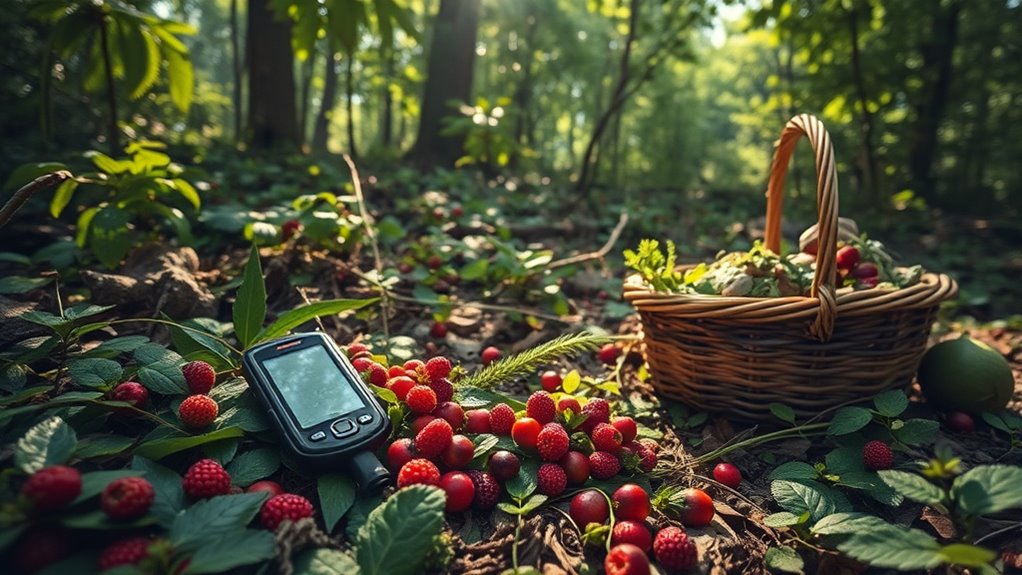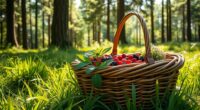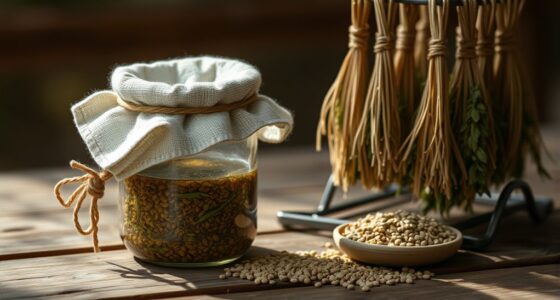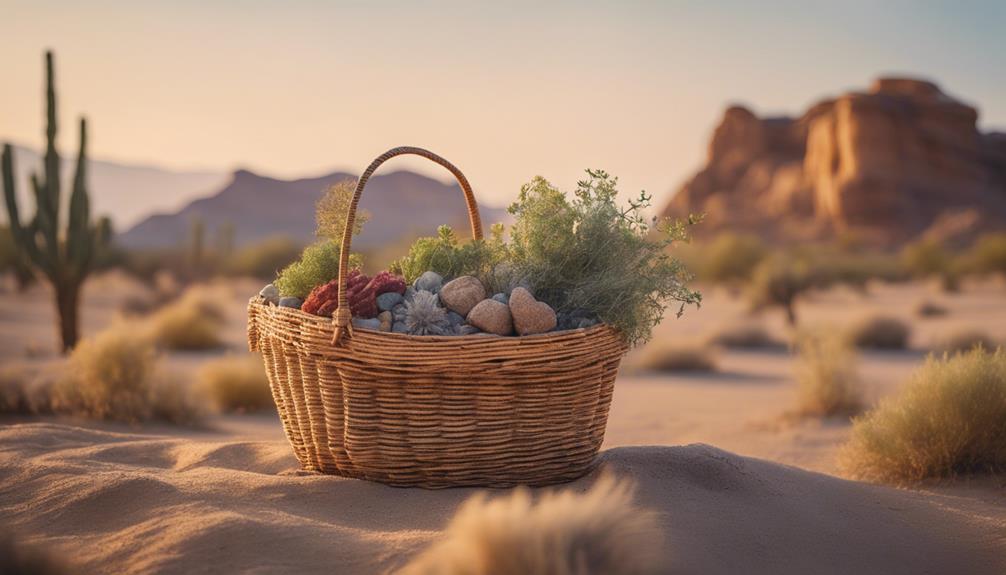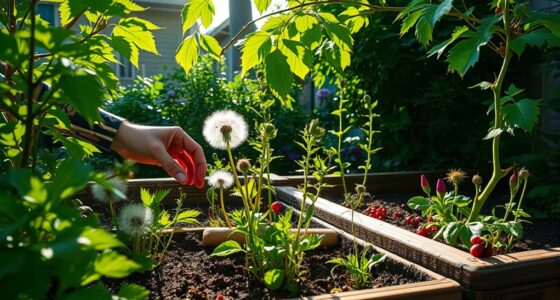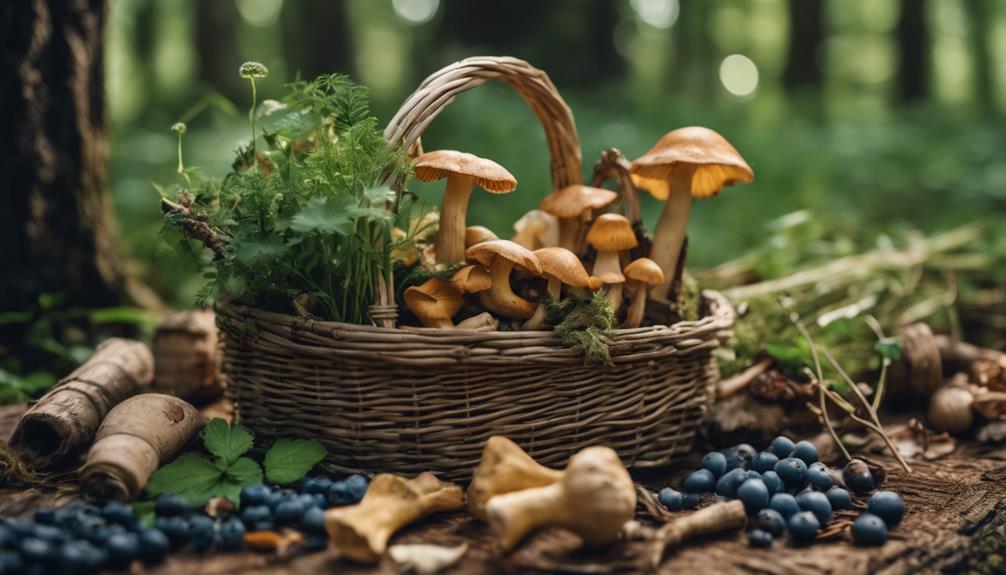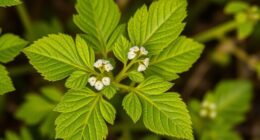Using GPS to map your wild food hotspots helps you easily locate and revisit your favorite foraging spots, making each trip more efficient. It allows you to mark precise locations, track seasonal changes, and add notes on abundance and best harvest times. By practicing sustainable gathering and updating your maps, you protect the environment and improve future foraging trips. Keep exploring how combining mapping and seasonal awareness enhances your wild food collection.
Key Takeaways
- Use GPS devices to mark and save wild food hotspots for quick future access.
- Add detailed notes on abundance, best harvesting times, and seasonal changes at each location.
- Revisit and update your GPS maps regularly to track shifting food availability and landscape changes.
- Practice sustainable harvesting by limiting collection and spreading foraging across multiple spots.
- Organize your GPS data and notes to develop an efficient, responsible foraging routine tailored to seasonal rhythms.
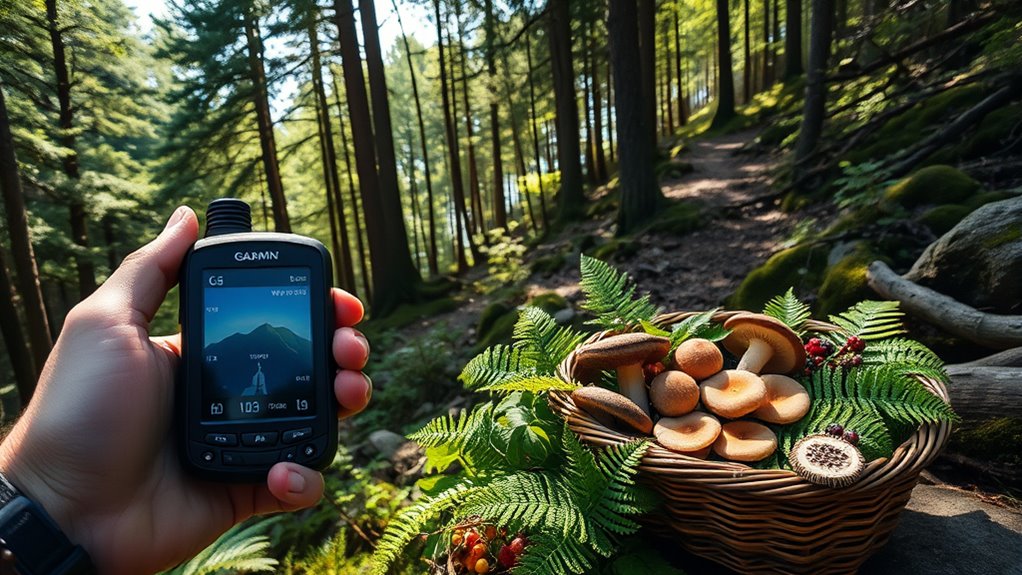
Discovering wild food sources can be both exciting and rewarding, especially when you can return to your favorite hotspots with confidence. Using a GPS device to mark your spots transforms your foraging experience, making it easier to revisit those productive areas time and time again. The key is to be respectful of the environment by practicing sustainable harvesting, which means taking only what you need and avoiding overharvesting plants or disrupting wildlife. This approach guarantees these resources remain abundant for future foragers and the ecosystem alike. In addition, understanding seasonal variations is essential. Many wild foods are only available during specific times of the year, so tracking these cycles helps you plan your foraging trips more effectively.
Map your wild food hotspots with GPS for sustainable foraging and seasonal success.
When you start mapping your hotspots, pay close attention to the seasonal patterns of your chosen plants and fungi. For example, certain berries ripen in late summer, while mushrooms may pop up in the fall after rain. By noting these seasonal shifts, you can optimize your visits, ensuring you gather the best harvests without wasting effort or damaging the environment. As you visit each spot, use your GPS to mark precise locations, and add notes about the best times to go, abundance levels, and harvesting tips. This way, your personal map becomes a detailed resource that guides your future outings.
Sustainable harvesting also involves understanding how much to collect. For instance, if you find a patch of wild herbs, only pick a small portion, leaving enough for the plants to regenerate and for wildlife to thrive. When collecting larger quantities of berries or mushrooms, spread your harvest across multiple spots or revisit the same location in different seasons rather than overharvesting a single area. By doing this, you help preserve the health of the ecosystem and ensure that your favorite hotspots remain productive over the years.
Additionally, practicing vertical storage solutions can help you organize your foraged items efficiently, reducing clutter and making future harvests easier to access. Incorporating seasonal variations into your mapping routine allows you to adapt as the landscape changes. Some plants may only be available during brief windows, so updating your GPS notes with the best harvesting times maximizes your success. Regularly revisiting and refining your map helps you develop a deeper understanding of each location’s quirks and rhythms. Ultimately, combining detailed GPS mapping with awareness of sustainable harvesting practices and seasonal shifts empowers you to enjoy wild food gathering responsibly and confidently, turning each outing into a rewarding adventure that benefits both you and the environment.
Frequently Asked Questions
How Often Should I Update My Wild Food Hotspot Maps?
You should update your wild food hotspot maps seasonally to guarantee location accuracy and track changes over time. As plant and mushroom locations can shift or become less reliable, periodic updates help you stay current and confident in your foraging. By revisiting and adjusting your maps each season, you optimize your foraging success and avoid missing valuable patches, making your wild food hunts safer and more productive.
What GPS Apps Are Best for Foraging Mapping?
Your wild food adventures deserve the best tools, and top foraging apps deliver incredible GPS accuracy, making your maps as precise as a hawk’s eye. Apps like Gaia GPS, AllTrails, and MapIt stand out for their detailed mapping features and reliable location tracking. They help you find and revisit your favorite foraging spots with confidence, ensuring you never miss a bounty and can easily mark new hotspots on your journey to wild food mastery.
How Can I Ensure Sustainable Harvesting From These Spots?
To guarantee sustainable harvesting, practice ethical foraging by only taking what you need and leaving enough for the ecosystem to thrive. Use your GPS to avoid overharvesting popular spots, and follow conservation practices like rotating harvest areas. Respect local regulations and seasonal cycles. By being mindful and responsible, you help preserve wild food sources for future foragers, maintaining healthy ecosystems and ensuring your hotspots remain productive.
Can I Share My Hotspots Without Risking Overharvesting?
Sharing your hotspots might seem risky, but with thoughtful community sharing, you can avoid overharvesting. You should consider storage concerns and set clear guidelines for responsible foraging. By sharing only with trusted friends and emphasizing sustainable practices, you protect these precious spots. Think of your hotspots as treasures—sharing wisely keeps the bounty alive for everyone, ensuring they remain abundant and vibrant for years to come.
What Legal Considerations Should I Be Aware of When Mapping Wild Foods?
When mapping wild foods, you should be aware of landowner permissions and environmental regulations. Always seek permission if the land isn’t public, and respect any restrictions on harvesting or conservation areas. Stay informed about local laws that protect certain species or habitats, and avoid overharvesting. By following these legal considerations, you guarantee responsible foraging while safeguarding ecosystems and respecting property rights.
Conclusion
By mapping your wild food hotspots with GPS, you become a seasoned explorer, like a treasure hunter returning to familiar, fruitful grounds. I remember one summer, pinpointing a secret berry patch that became my go-to spot—each visit felt like reuniting with an old friend. With a little planning, your wild food adventures turn into reliable harvests, transforming the wild into your personal pantry. Trust your GPS; it’s your compass to nature’s hidden treasures.

